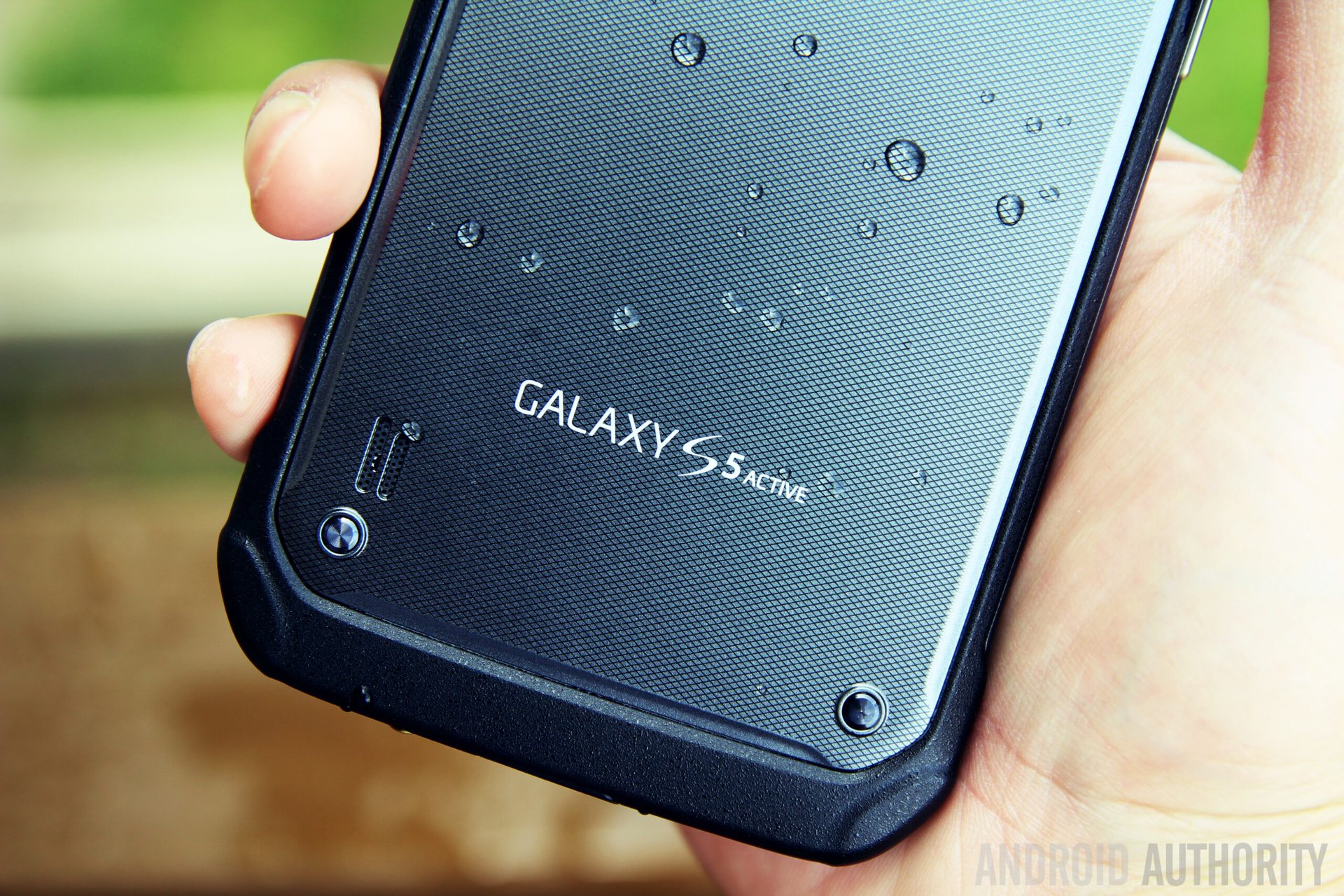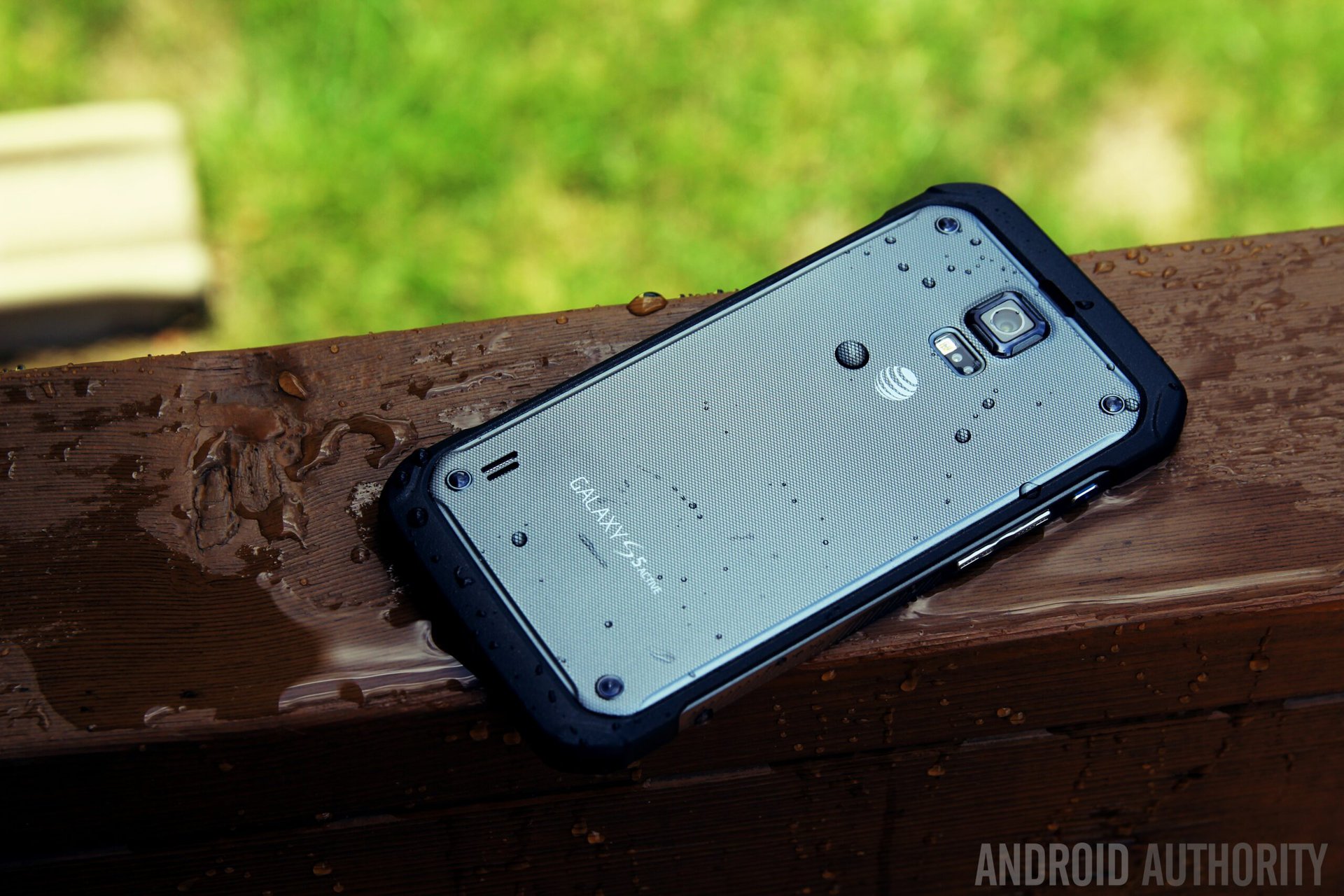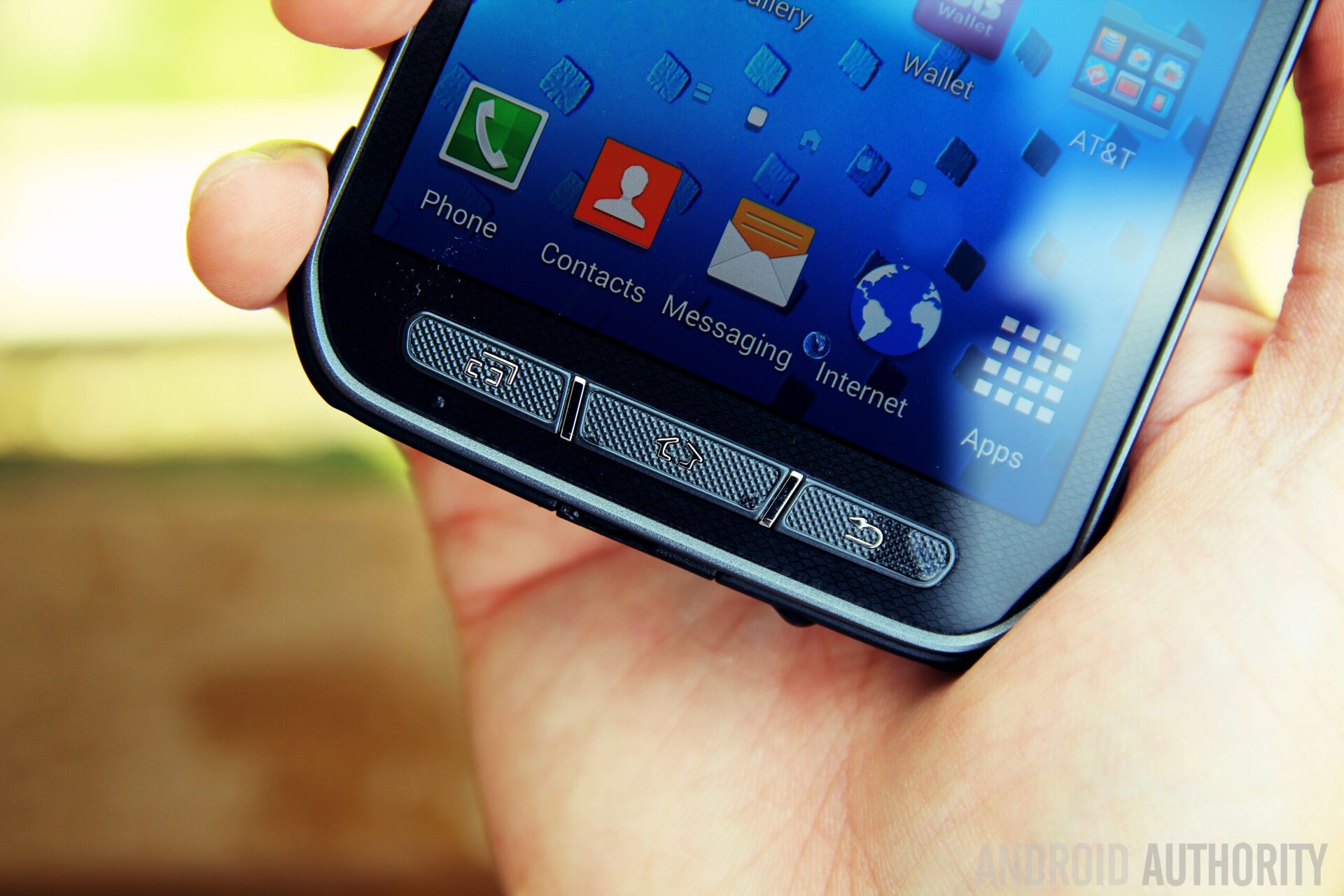Affiliate links on Android Authority may earn us a commission. Learn more.
Does your smartphone need to be rugged?
June 8, 2015

After many rumours and leaks, the Samsung Galaxy S6 Active was finally announced today! The update brings most of the specs of the Galaxy S6, with the addition of dust and water resistance and a few other minor changes.
Samsung first experimented with ruggedness in the Galaxy S4 Active – and the experiment failed – before adding it to their flagship in the Galaxy S5 (although they did release the Galaxy S5 Active at a later date). Fast forward to the Galaxy S6 and Samsung dropped the feature again. Clearly the Galaxy S6 Active is designed to offer the rugged features some may be looking for in a flagship, but is dust and water resistance important to you?
Pros of dust and water resistance
The biggest advantage to ruggedness is that it protects against everyday incidents such as water damage from rain – which can void your warranty incidentally – or dust particles affecting performance if you live in an area like the Middle East, where sandstorms are common. While some phones are water resistant and can be used in a shower or while swimming, snorkelling or diving, others are only splash proof and can’t be submerged underwater.
An example of this is the Sony Xperia Z3, which can be placed up to 1.5 metres underwater for up to an hour while the Apple Watch – which is only splash resistant – can’t even be worn in the shower.
The other benefit to adding ruggedness is the extra thickness provided by the protection means there’s often room for OEMs to add a larger battery or additional features that wouldn’t have been possible in other handsets due to a lack of available space.
As an example, the Galaxy S6 features a 2550 mAh battery and is 6.8mm thick but the Galaxy S6 Active has a much-larger 3500 mAh battery, despite being just 0.1mm thicker. It also has a quick action button on the left hand side, allowing you to launch apps like the flashlight, compass or other apps from the phone’s “Activity Zone”.
Sure the S6 Active does drop a few other features (see below) but the battery benefits are certainly tempting, especially given the average Galaxy S6 battery performance. That’s a couple of the benefits but there’s also a couple of disadvantages to consider.
Cons of dust and water resistance

The biggest disadvantage of adding ruggedness is that it has a marked effect on the design of your smartphone. Looking at the Galaxy S6 and the Galaxy S6 Active side-by-side, the metal and glass design from the S6 is replaced by a new Active body that’s available in colors like Camouflage Blue and Gray. The impressive metal and glass design is one of the key selling points of the Galaxy S6 and – without actually trying the Galaxy S6 Active in hand – it’s difficult to see whether the Galaxy S6 Active offers this same premium experience.
The decision around design is related mostly to Samsung as Sony’s Xperia devices offer advanced ruggedness with the same omnibalance glass and plastic design that the company has always used. It’s more than likely that once Samsung produces a few Active smartphones, the design of its rugged smartphones will improve somewhat.
Another disadvantage is that certain features – such as a fingerprint sensor, microSD card expansion slot or removable battery – are also left out as they won’t work well in water. The fingerprint sensor in the Galaxy S6 is built into the home button and with the bottom row being replaced by active buttons, the fingerprint sensor has also disappeared. The expandable storage and removable battery are certainly no surprise but could be a drawback if these features are important to you.
Poll: Is dust and water resistance important to you?

When the Galaxy S4 Active came out, we saw Samsung go head to head with Sony in the rugged market and it looked like dust and water resistance would become a key feature in smartphones going forward. However, fast forward a couple of years and the demand for rugged features has somewhat fizzled out.
In the past two years – Sony devices aside – there have only been a couple of rugged smartphones announced and rival OEMs including LG, HTC and Huawei have shown no interest in offering rugged smartphones. Some rugged devices come at a premium to non-rugged competition and a perceived lack of trust in the feature may be a couple of reasons that rugged devices aren’t the big seller that many expected. But is it important to you?
[related_videos title=”Rugged devices in video:” align=”center” type=”custom” videos=”399028,238060,539522,570687″]
There are certainly positives and negatives to rugged devices but do you need a rugged device? If you found the perfect phone but found it didn’t offer rugged features, would that put you off? Let us know your views in the comments and by voting in our poll below.
Thank you for being part of our community. Read our Comment Policy before posting.